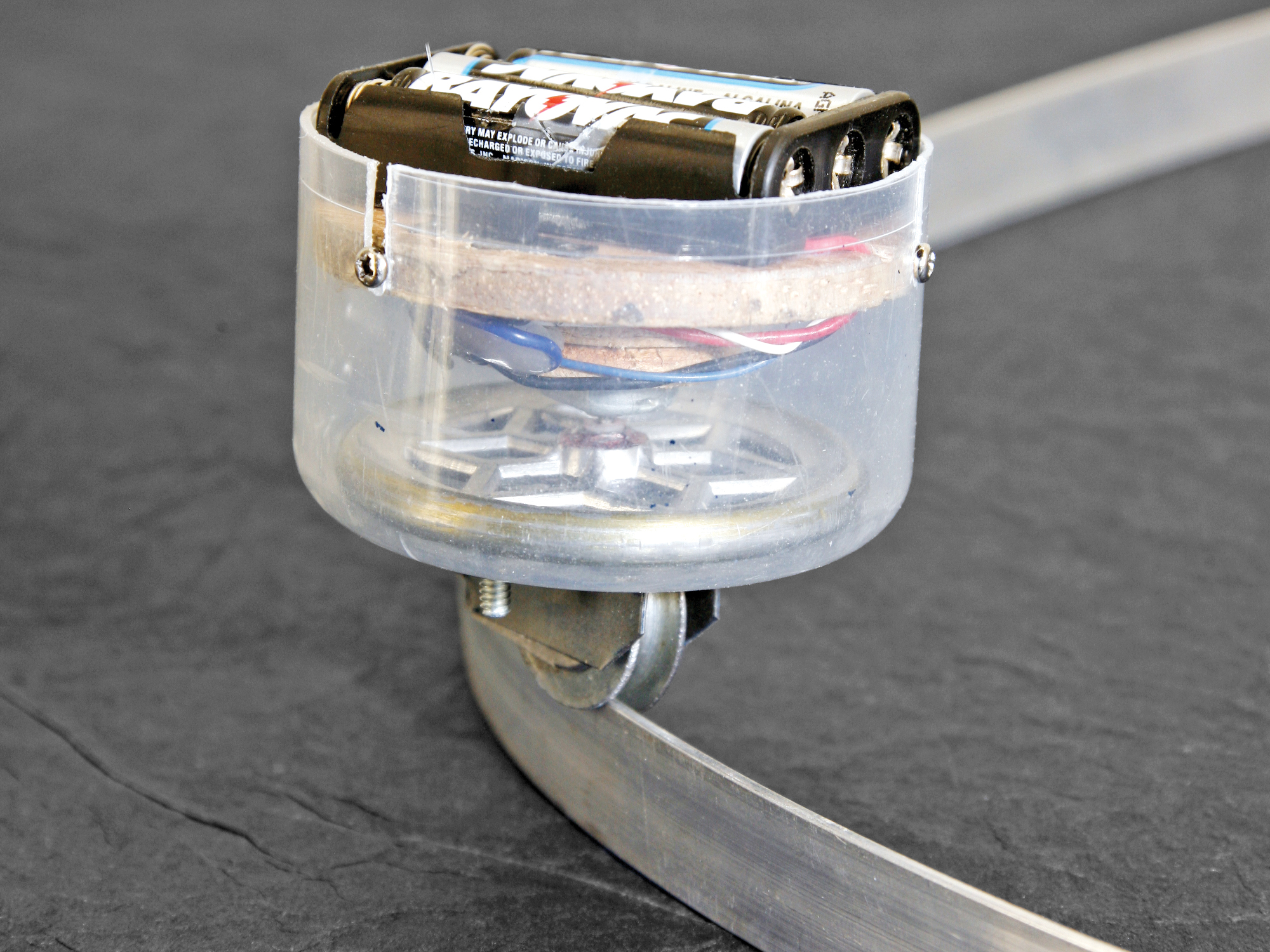Anyone who’s played with a gyroscope toy powered by pulling a string wound around its axle knows that it’s fascinating, but also frustrating because it runs down so quickly and has to be rewound.
I decided to make an electric version that runs for as long as its AAA batteries hold out — which can be at least a half-hour, since the spinning gyroscope wheel stores some energy, easing the load on the motor.
I went through 3 iterations before arriving at this simple design, which is easy to build and works well.
In addition to battery power, the Gyrocar has a small track wheel at the bottom that’s friction-powered by the main gyroscope wheel.
The track wheel drives the Gyrocar along any thin, horizontal edge while it bears the gyroscope’s weight, but otherwise it doesn’t press against the main wheel, to avoid draining energy. Three screws let you adjust the track wheel or disable it entirely so that the Gyrocar stays idling in one place.
I’m sure MAKE readers will improve on my design. And if you’ve got access to a metal lathe, you can make an original version that isn’t based on the toy.


